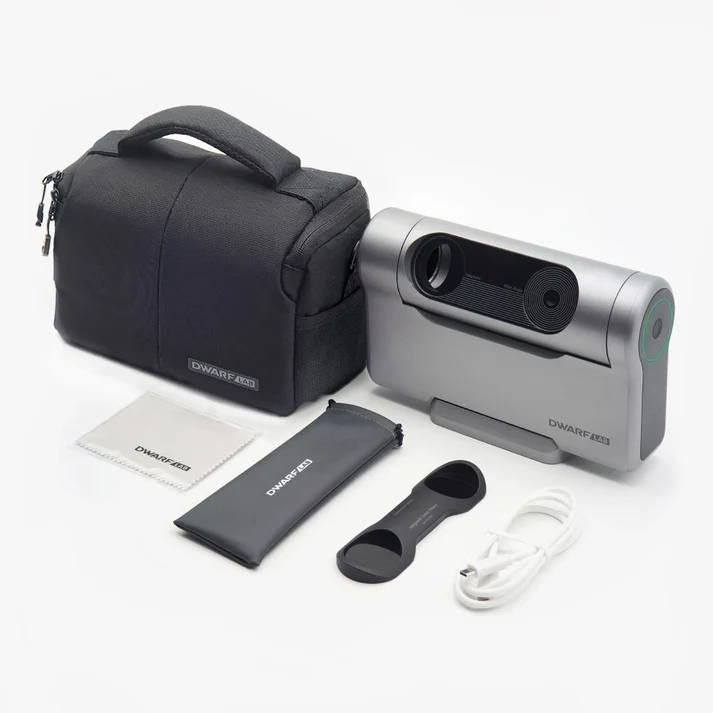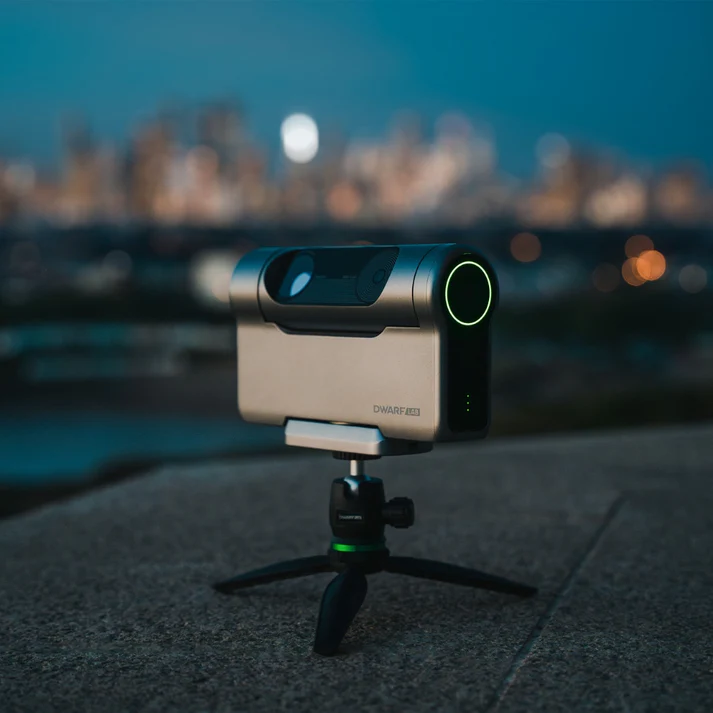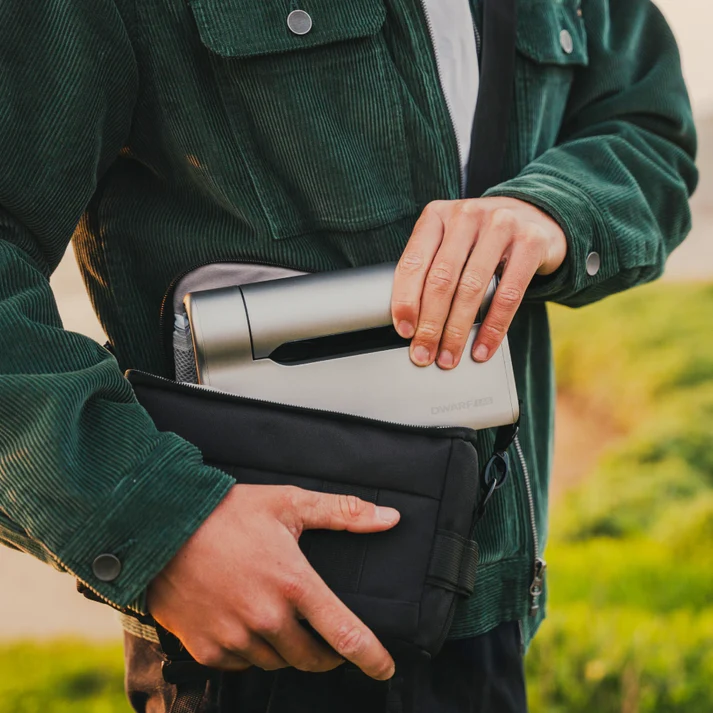At the time of writing, Dwarflab has just unveiled their latest smart telescope, the Dwarf 3! It’s now available for pre-order at around 454 euros (500 US dollars) with a release date set for late September 2024. Dwarflab made waves in the astrophotography world back in 2022 with the launch of the Dwarf 2, one of the first affordable smart telescopes. Now, two years later, Dwarflab faces new competition, particularly from ZWO’s Seestar S50, which is in a similar price range. So, what upgrades does the Dwarf 3 bring compared to the Dwarf 2, and how does it stack up against other smart telescopes? Should you start saving for the Dwarf 3 or stick with the Dwarf 2? Let’s dive into the specs, and I’ll share my initial thoughts.
Since this post, Dwarflab was kind enough to send my an early production version of the Dwarf 3. You can find my hands-on review of the Dwarf 3 here.
What are Smart Telescopes?
Smart telescopes are fantastic for anyone who wants to observe and photograph distant nebulae, galaxies, the Moon, and the Sun using their smartphone or tablet, without diving into the complexities of traditional astrophotography. Telescopes like the Dwarf 3 come with a dedicated app that lets you wirelessly connect to and control the telescope right from your device. These smart telescopes, including the Dwarf 3, can automatically locate and track celestial objects, so you don’t need to manually adjust the telescope. Simply choose the object you want to observe or photograph in the app, set the telescope on a level surface, connect to it, and it will automatically align with your chosen target and start capturing images.
Most smart telescopes use an alt-azimuth tracking method, which typically limits them to 10 to 15-second exposures of deep-sky objects. However, by stacking multiple short exposures—a technique known as lucky imaging—you can enhance the visibility of Deep Sky Objects (DSOs) and improve the signal-to-noise ratio in your images. Dwarflab has announced that the Dwarf 3 will be one of the first smart telescopes to also feature an EQ mode, which significantly boosts the ability to take longer exposures, improving image quality and reducing noise. Keep in mind that capturing a decent image of a deep-sky object may require anywhere from 15 minutes to several hours, so patience is key in astrophotography.
Dwarflab’s Smart Telescopes
The Dwarf II, Dwarflab’s first smart telescope, made its debut in 2022. As one of the first smart telescopes priced under $500, it opened the door for a whole new crowd eager to explore stargazing and astrophotography without breaking the bank. Dwarflab’s Dwarf telescopes come equipped with both widefield and tele-zoom lenses, making them versatile tools. During the day, the Dwarf can double as a nature and wildlife smart-cam, wirelessly controlled through the Dwarflab app on your smartphone or tablet. You can move the camera, snap photos, shoot videos, and even auto-track wildlife. By night, the Dwarf II transforms into a smart telescope with a vast database to help you locate, observe, and photograph celestial objects, all via your mobile device. The Dwarf 3 takes this concept further, boasting several upgraded features. However, new competitors like ZWO’s Seestar S50 Smart Telescope have also entered the market at a similar price point. It’ll be exciting to see if the Dwarf 3 can match—or even outshine—these rivals in this affordable price range.
The Dwarf 3 Smart Telescope is available on pre-order at Dwarflab, High Point Scientific.
Dwarf 3: Improved Optics
Like the Dwarf 2, the Dwarf 3 comes with two lenses: a widefield and a tele-zoom lens. However, the Dwarf 3 steps things up with larger apertures—3.4mm for the widefield lens and 35mm for the tele-zoom lens, compared to 2.8mm and 24mm on its predecessor. In astronomy, a larger aperture is key because it allows more light from distant space objects to be captured, leading to better resolution. Additionally, the tele-zoom lens on the Dwarf 3 has a longer focal length of 150mm (versus 100mm on the Dwarf 2), providing higher magnification for observing space objects. The tele-zoom lens also features extra-low dispersion (ED) glass to reduce diffraction spikes around bright stars, helping to produce higher resolution, more detailed, and less noisy astro-images compared to the Dwarf 2.
When compared to ZWO’s Seestar S50, the Dwarf 3 doesn’t quite match its 50mm aperture and 250mm focal length triplet refractor. However, the Dwarf 3’s shorter focal length gives it a much wider field of view, making it ideal for capturing expansive deep-sky beauties like the Andromeda galaxy or the Orion Nebula in a single shot—something that is more challenging with the Seestar S50 that has a much narrower-view.
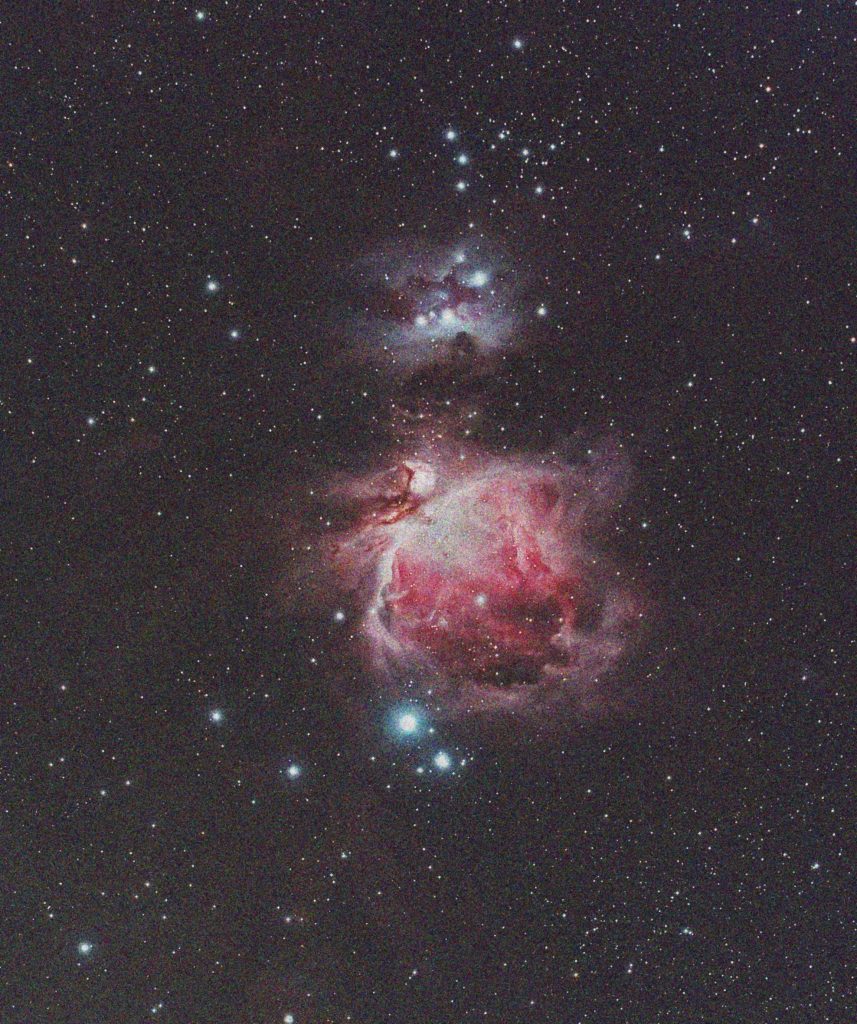
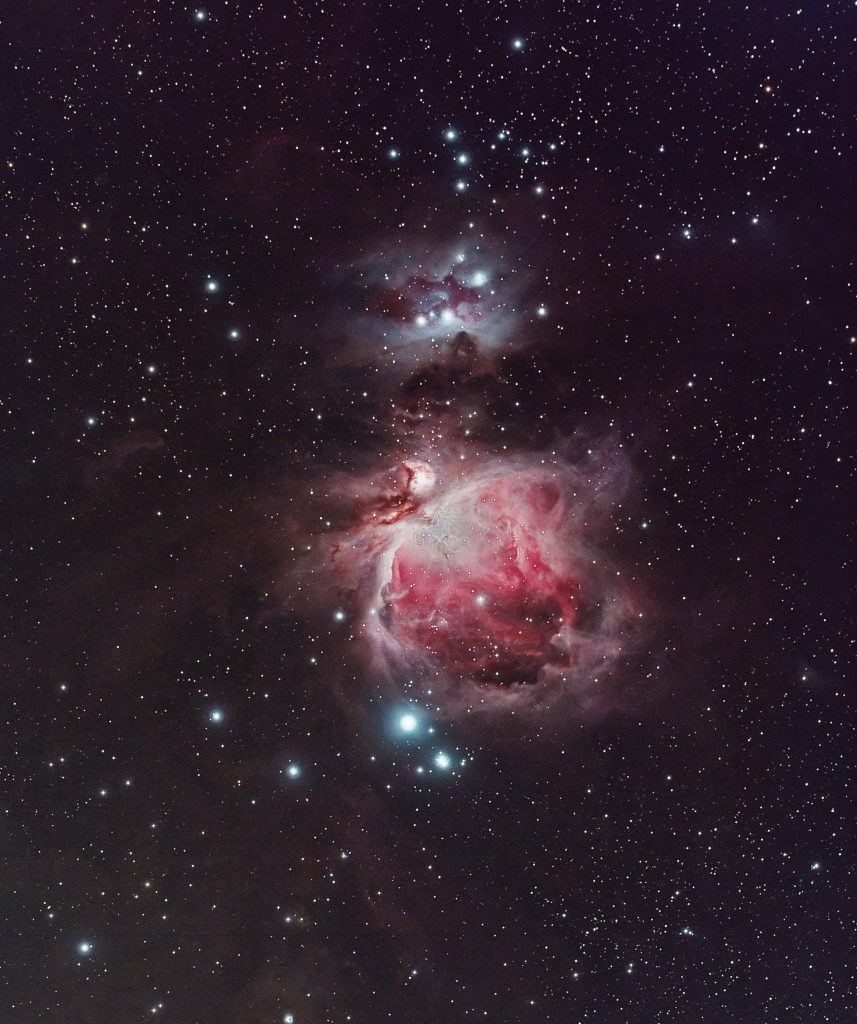
Left: Before post-processing tool; Right: After post processing tool
Dwarf 3: Wildlife and Astronomy camera in one
It’s worth noting that the Dwarf 3 is specifically designed to function as both a nature and astrophotography camera. For instance, the widefield camera can double as a finder scope during the day. You can use the widefield lens to position the telescope and center your object of interest, whether it’s a bird, a flower, or something else, in your field of view. Once centered, you can easily switch to the tele-zoom lens for a close-up view, and this feature works seamlessly. Additional features include panorama, video, automatic tracking of animals or people, and high-speed 60 frames-per-second video, perfect for capturing animals in action. When I tested the Dwarf 2 during the day, I found these features to work quite well, and I had a lot of fun with it. However, the auto-tracking feature on the Dwarf 2 was a bit unstable, and I needed to stay within 5 meters to maintain a connection. It will be interesting to see if Dwarflab has improved these and other features on the Dwarf 3.
Dwarf 3: Updated Camera Sensor
The Dwarf 3 is equipped with a Sony IMX678 Starvis 2 color camera sensor, offering a resolution of 8.3 megapixels (3840×2160), which is a clear upgrade from the IMX415 Starvis sensor found in the Dwarf 2. The second-generation Starvis sensors feature enhanced noise reduction, which should help minimize noise in your space photos. Additionally, Dwarflab has included a built-in AI tool in the camera to automatically reduce noise in your astrophotography. This enhanced noise reduction is a significant improvement, especially considering that images from its predecessor, the Dwarf 2, tended to be quite noisy, even after applying flat and bias frames.
Additionally, and as mentioned, the Dwarf 3 introduces a new EQ mode that allows up to 60-second exposures, a substantial improvement over the Dwarf 2’s 15-second limit. This enhancement should significantly boost the signal-to-noise ratio in nighttime space photography, leading to clearer images with less noise and reducing field rotation issues when used in alt-az mode.
Dwarf 3: New Built-in Filters
The Dwarf 3 comes with three built-in filters, a departure from the Dwarf II’s external filter holder. Filters are essential in astronomy for blocking unwanted city lights and capturing specific wavelengths associated with common gases like ionized Hydrogen (656.3nm) and Oxygen (500.7nm), often found in emission nebulae. The Dwarf 3 includes a VIS filter for daytime use, covering the 430-650nm range, an astro-filter extending from 440 to 690nm (near-infrared), and a dual-band filter designed to capture ionized hydrogen (H-alpha; 656.3nm), Oxygen III (500.7nm), and Hydrogen Beta (486nm)—elements commonly found in large star-forming nebulae.
This built-in filter approach is a new direction compared to the Dwarf 2, which used an external filter holder for 1.25″ filters. While an external holder offers more flexibility for selecting your own filters, like solar, moon, IR-cut, or nebula filters, the built-in filters simplify the process for beginner astrophotographers by eliminating the need to choose the right filter for each target. This design change aligns with the ZWO Seestar S50, which also features built-in filters (excluding the solar filter) and a user-friendly app that automatically selects the optimal filter for each object.
Dwarf 3: Other improvements (Milky Way Pictures!)
Compared to the Dwarf 2, Dwarflab promises several significant upgrades with the Dwarf 3. These include a larger storage capacity with a 128GB eMMC (up from 64GB SD), and the ability to use all shooting modes (video and photo) with both the tele and widefield lenses, whereas the Dwarf 2’s widefield lens was limited to taking simple daytime photos. This opens up new avenues for astronomers, like using your Dwarf 3 to take a picture of the MilkyWay (see picture below, distributed by Dwarflab, taken with the Dwarf 3). The Dwarf 3 also supports 60fps video at 1080p, doubling the Dwarf 2’s 30fps capability. Dwarflab has also announced that the Dwarf 3 will feature an automatic in-app post-processing tool to enhance your photos. Power-wise, the Dwarf 3 comes with a built-in internal battery with a USB-C output, which is about twice as powerful as the replaceable battery in the Dwarf 2.
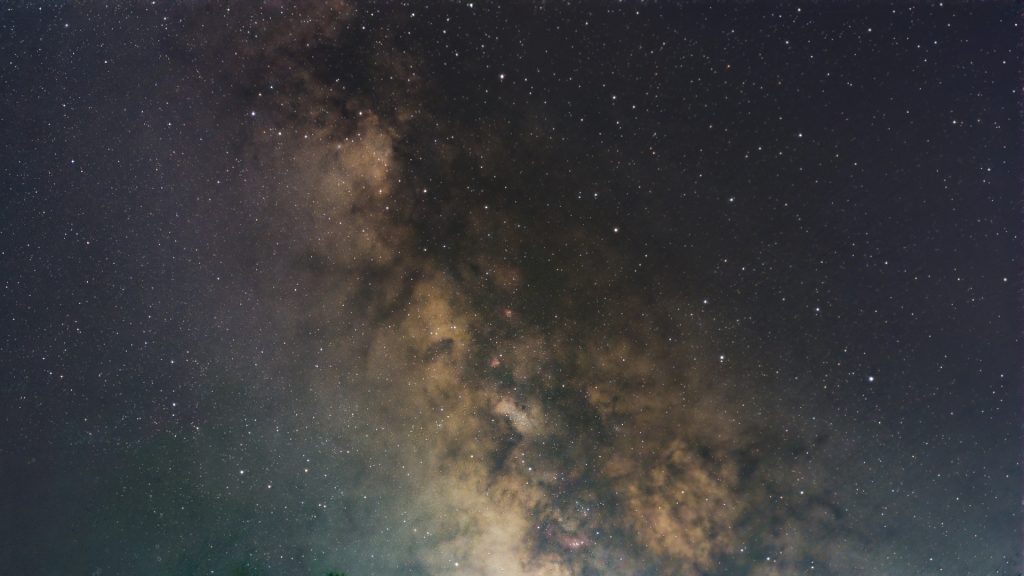
One feature I’m particularly excited about is the anticipated improvements to the Dwarflab app. Despite upgrades, I found the Dwarf 2’s app somewhat lacking compared to other smart telescope apps, like the excellent ZWO Seestar app. It will be fascinating to see how the new Dwarf 3 performs against both its predecessor and its competitors. Dwarflab has announced that the app will include a dedicated sky atlas for easier deep sky object location and a user-friendly interface for planning and capturing astronomy images.
Overall, with the Dwarf 3, Dwarflab is aiming to elevate nature and astrophotography experiences for beginner wildlife and astronomy enthusiasts—all without breaking the bank. As of now, the Dwarf 3 is available for 454 euros (about 500 USD). I can’t wait to get my hands on one and give it a thorough review. Stay tuned!

